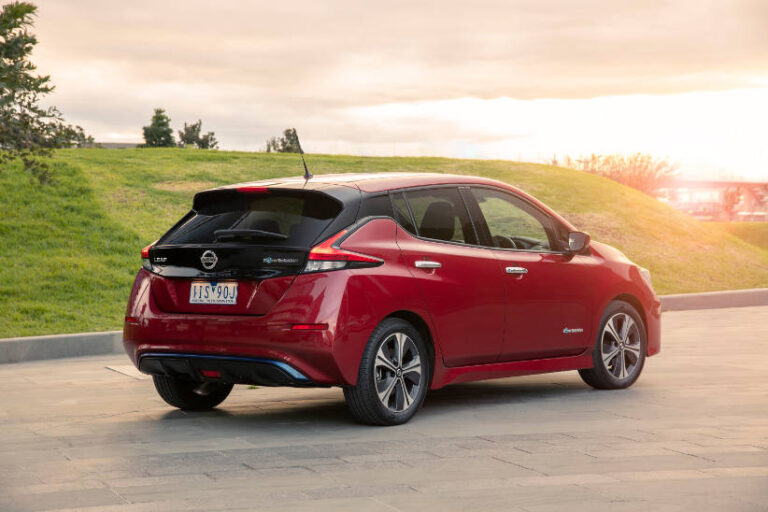In true testament to the satisfaction of zero-emission mobility, Nissan discovers European EV drivers are going the extra mile. In fact, on average they are annually travelling 630 clean kilometres1,2 (km) further than European internal combustion engine (ICE) drivers according to recent research commissioned by the automaker.
To help further understand the driving experiences and perception of European motorists, the study reveals EV drivers are becoming trailblazers on European roads, totalling on average more than 14,200km1,2 yearly.
Compared to their ICE driver counterparts, who are averaging 13,600km1, this new research foresees a bright future for sustainable mobility.
“This research reiterates that electric driving is not only a smart option beneficial to the environment but also a fun, exciting and convenient choice for the owners. It is no surprise that people now drive EV further than ICE cars. We are confident that with more EV on the road dispelling myths, range anxiety will soon be in the past,” said Arnaud Charpentier, Region Vice President, Product Strategy and Pricing, Nissan AMIEO.
Going the distance
Of the European EV drivers surveyed, Italian electric drivers travel the furthest, averaging more than 15,000km1,2 yearly closely followed by those in the Netherlands (14,800km1,2), demonstrating that those who have already made the switch feel at ease behind the wheel of zero-emission motors.
Reassuringly, the majority (69%1) of European EV drivers are happy with the current charging infrastructure available. Likewise, almost a quarter (23%1) say the most common myth surrounding EV driving is that the current charging infrastructure cannot cope, indicating high satisfaction in existing EV drivers, and a positive opportunity for future adopters.
Switching-on
Almost half (47%1) of European ICE drivers say the main advantage of a petrol or diesel car is greater range autonomy. Likewise, when looking into the reasons behind the 30%1 of European ICE drivers who are unlikely to consider a fully electric vehicle, the majority (58%1) said the biggest concern is that EVs have low driving range autonomy.
Further exploration into factors that would convince drivers to switch unsurprisingly reveal:
- 38%1 of ICE drivers in Europe believe the biggest pull-factor would be greater range
- 32%1 of European ICE drivers would be drawn by ease of charging.
- 30%1 note having a better charging infrastructure would persuade them to switch.
However, despite these results, drawing comparison with those who have already converted to an electric car, EV drivers confidently counteract these fears. 70%1 of existing European EV drivers note their experience of range has been better than they expected. These findings serve as a strong indication to ICE drivers that range should not be a deterring factor for switching to an EV.
“With EVs on the cusp of wide-spread adoption, we can be confident these positive findings should help change the opinion of the ICE drivers for whom a degree of range anxiety is still preventing them from converting to electric mobility,” continued Arnaud.
Distorted reality
The survey also uncovers a strong disconnect surrounding charging and infrastructure from those EV drivers who currently utilise the facilities, and the impression of those ICE drivers yet to benefit from them, highlighting starkly different viewpoints.
- 56%1 of European ICE drivers who are not considering an EV believe there are not enough charging points
- 56%1 think they are more expensive to buy than their petrol/diesel equivalent
- 48%1 suggest there is not enough public charging infrastructure.
However, over a quarter of European EV motorists say that running out of charge (28%1), charging time (30%1) and EVs being expensive (31%1) are amongst the biggest myths of EV driving, implying that charging and infrastructure are sufficiently developed.
Leading the change: My Life with a Nissan LEAF series
As we enter the second decade of electrification, it is ever more apparent that EVs will be further embedded into our daily lives.
In the final instalment of My Life with a Nissan LEAF series, Nissan LEAF owners discuss their favourite aspects of being EV owners, talking about mileage, long distance driving, advanced tech, safety and more.
84-year-old Luis Charro from Spain made the decision to switch to a LEAF during his retirement. Encouraged by the many climate-friendly benefits of his EV, Luis also made the decision to have solar panels installed at his home to charge his car. Impressed at the speed at which he could adapt to his new vehicle and its advanced technology, Luis proves it is never too late to make the switch to EV.
LEAF owner Edwin Glaser from The Netherlands admits the continual improvements to charging infrastructures over years of ownership, combined with LEAF upgrades, make him feel at ease behind the wheel travelling long distances.
Likewise, driver by profession, Marco Massullo is a taxi driver in Rome. With range a non-negotiable aspect, he has been so impressed with his Nissan LEAF he is now enjoying ownership of his third model.
Finally, Maria Jansen from Norway recently celebrated receiving the 500,000th LEAF worldwide. With the upgrade to the 62KWh model, Maria benefits from extended range and an enhanced driving experience. With family living in Sweden, she has greater peace of mind knowing her LEAF can handle long journeys with ease.
During the first decade of the Nissan LEAF, the world’s first mass-market 100% electric car has attracted over 500,000 owners globally. Collectively, these owners have travelled enough kilometres to drive around the earth 400,000 times proving EV drivers are not shy when it comes to travelling the extra distance.
“This is an exciting time for the automotive industry. As we continue to expand our electric line-up with the all-electric coupé crossover, the Nissan Ariya and the all-new Qashqai with our award-winning e-POWER technology, there will be more choice to help inspire drivers to make the switch and continue this positive trend of cleaner travel for our planet,” continued Arnaud Charpentier.






